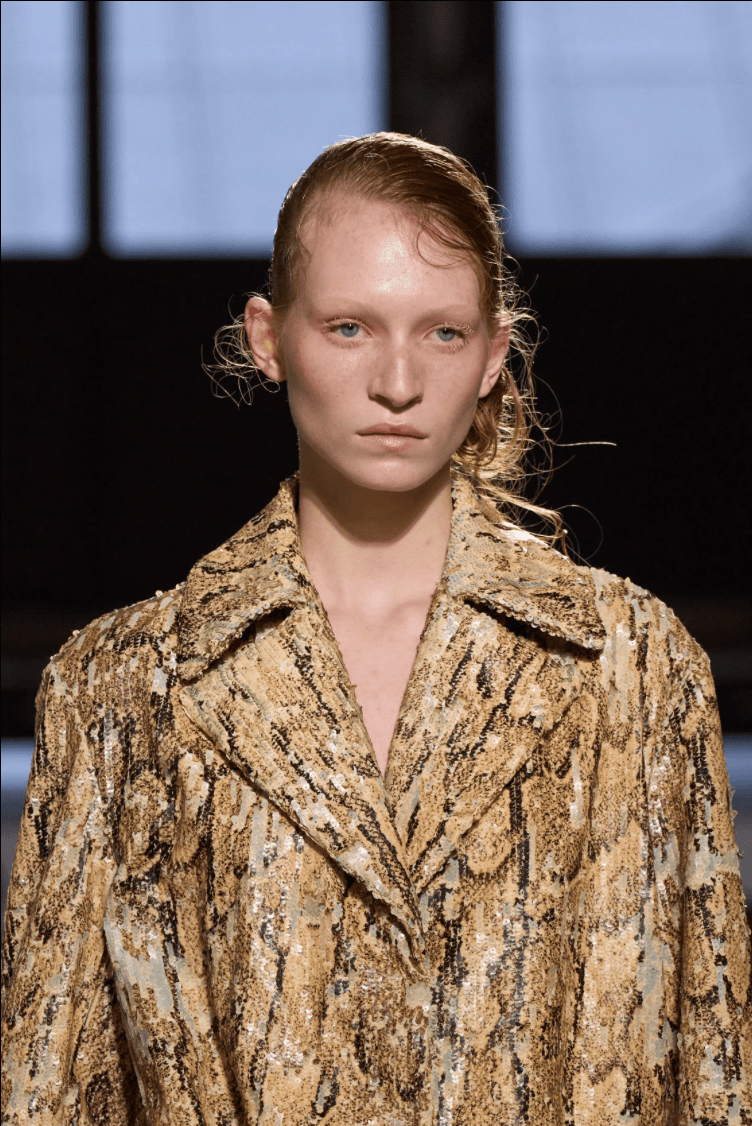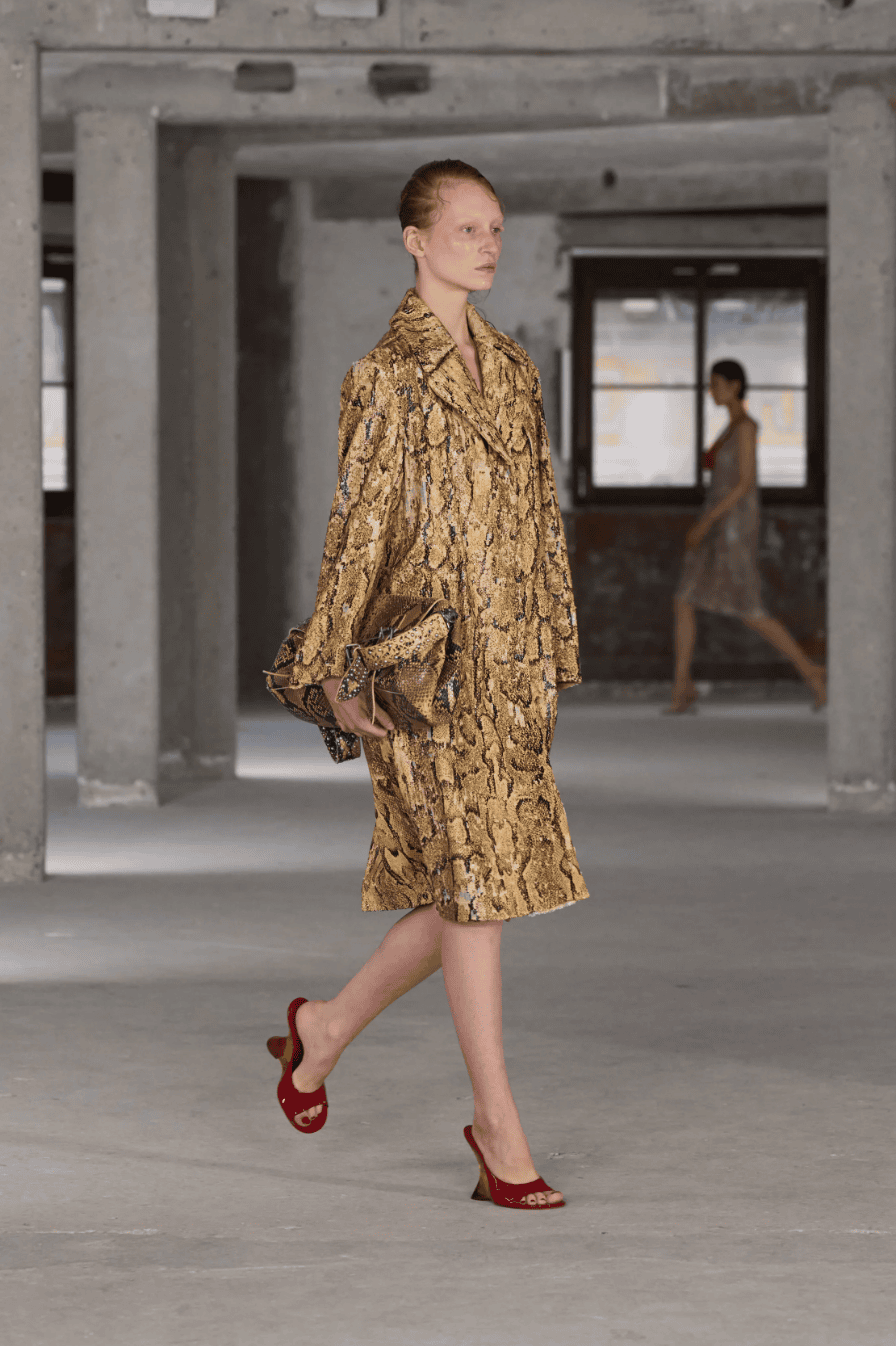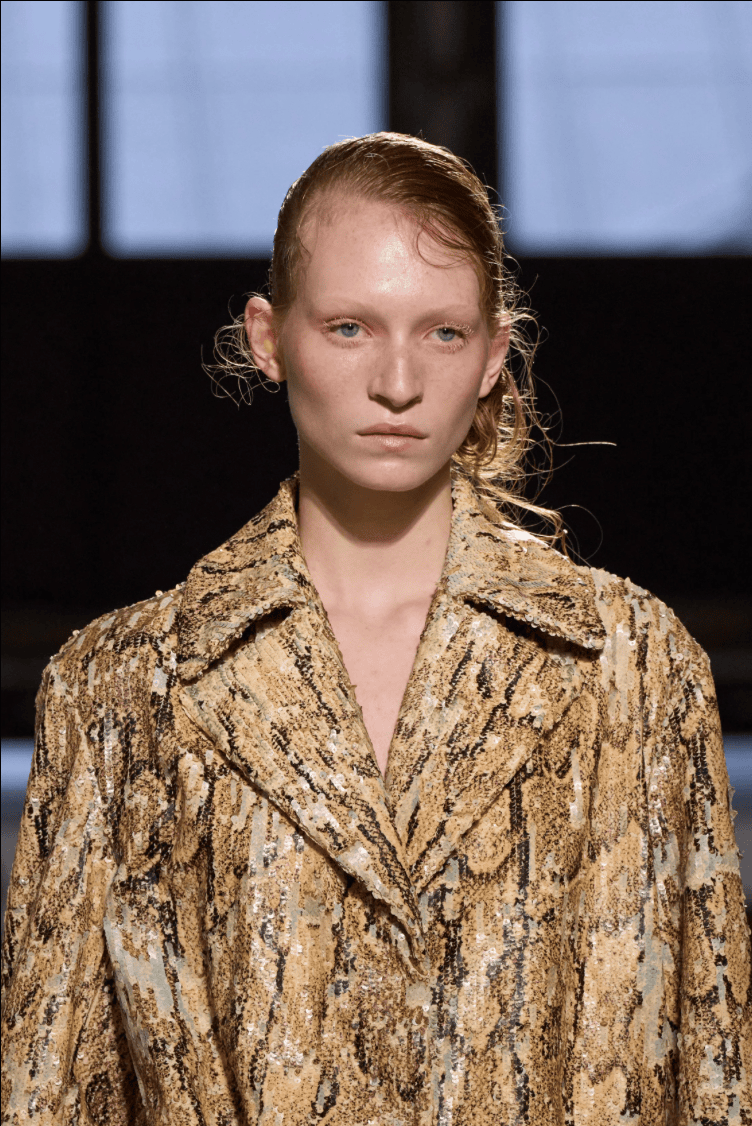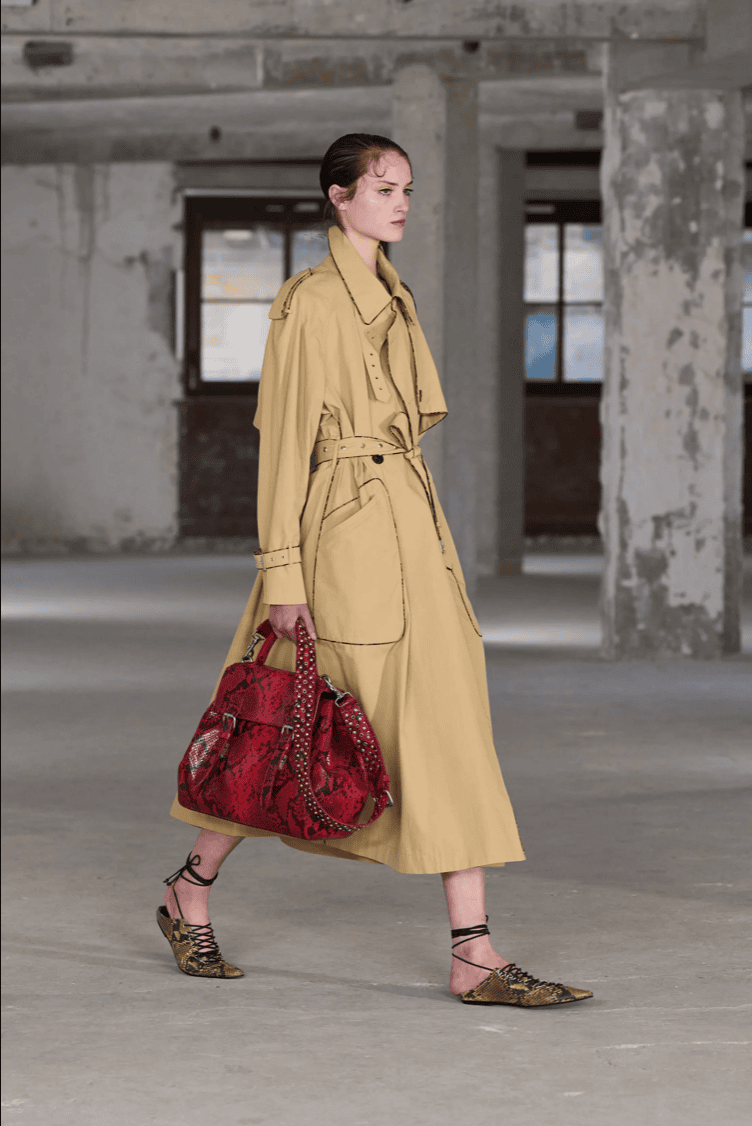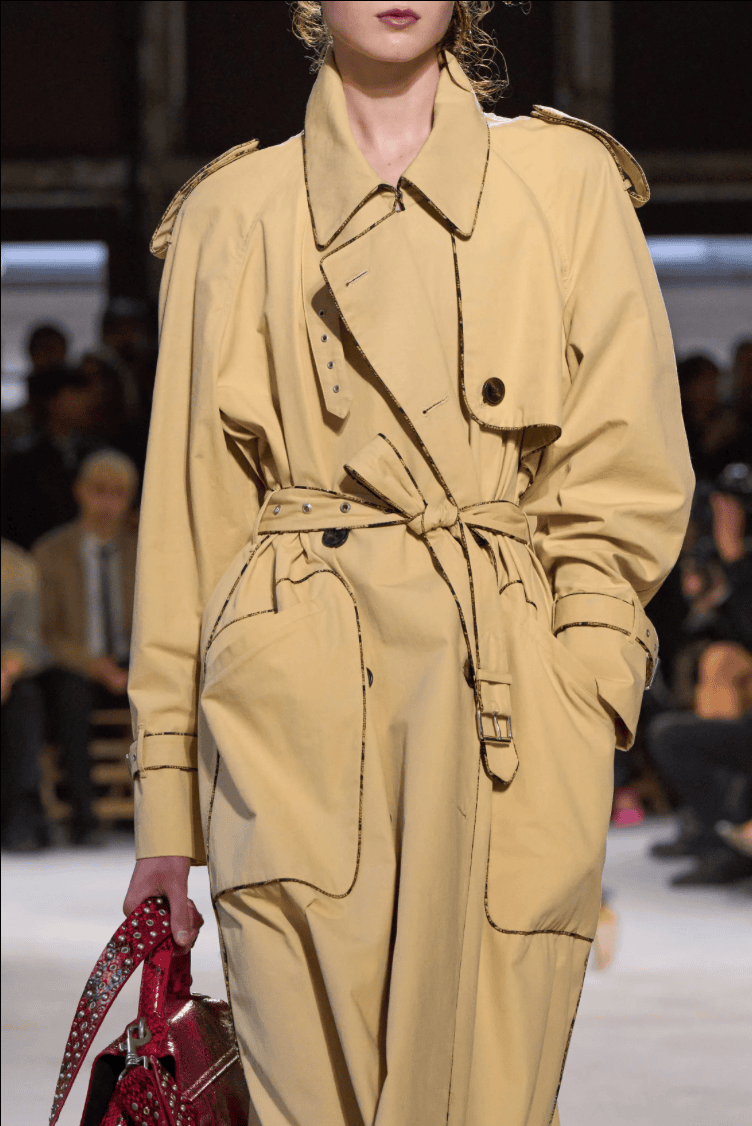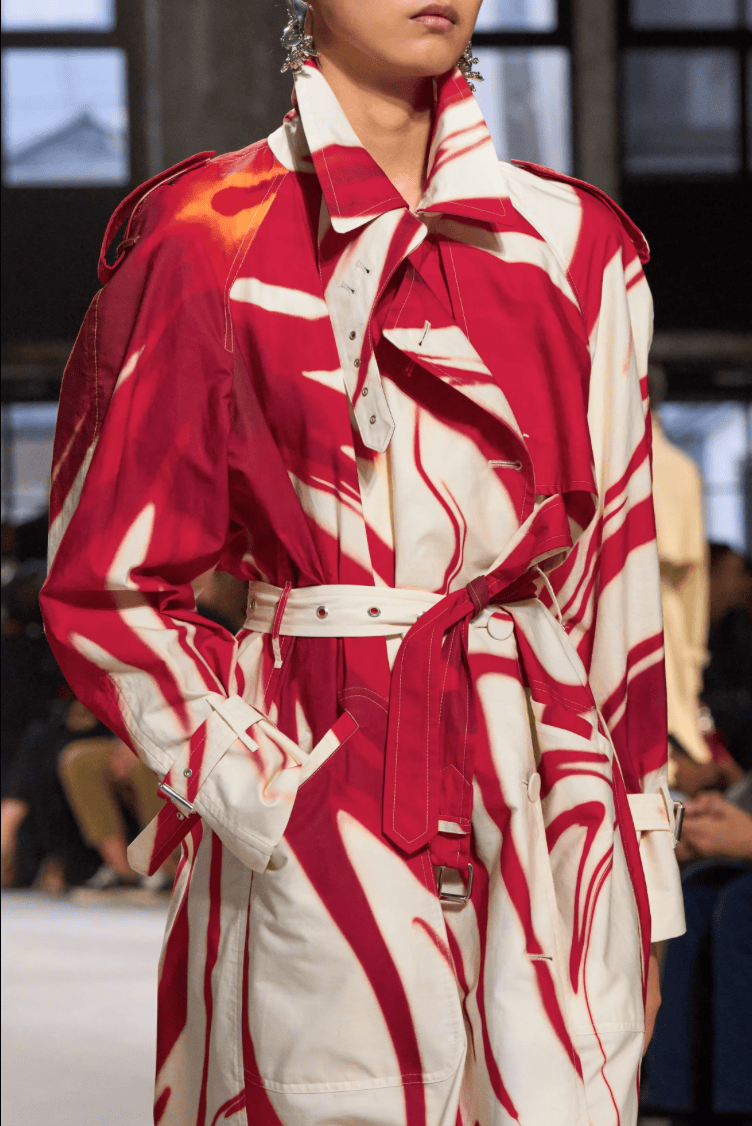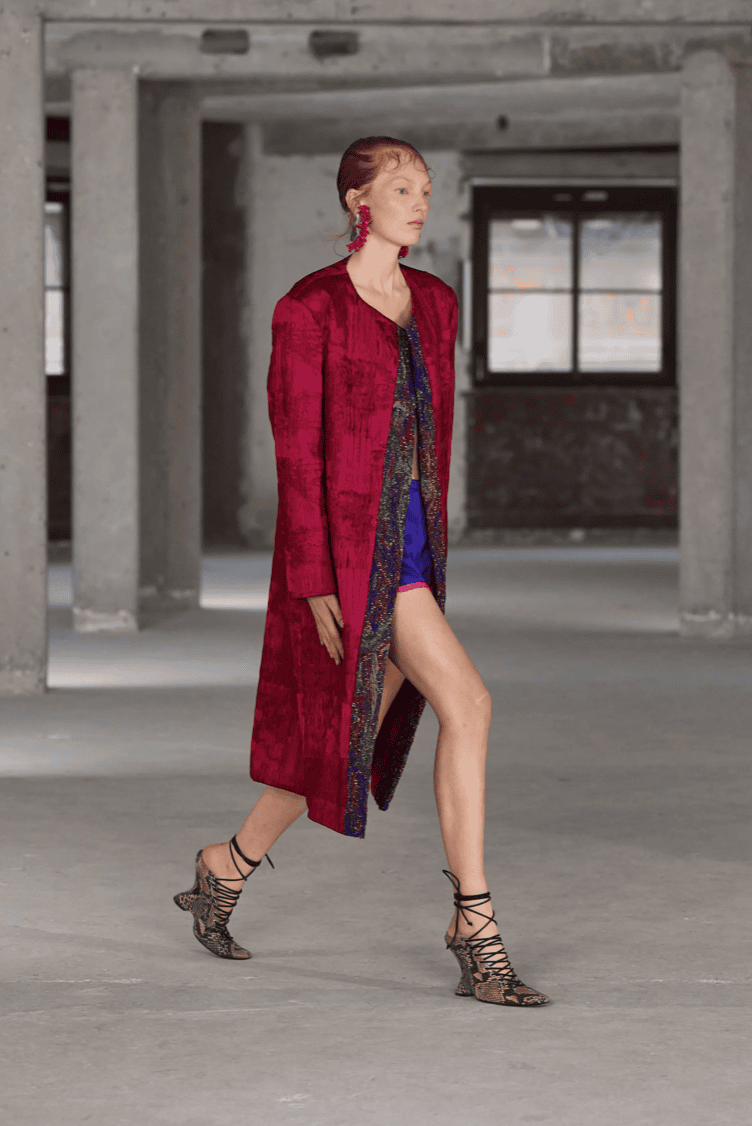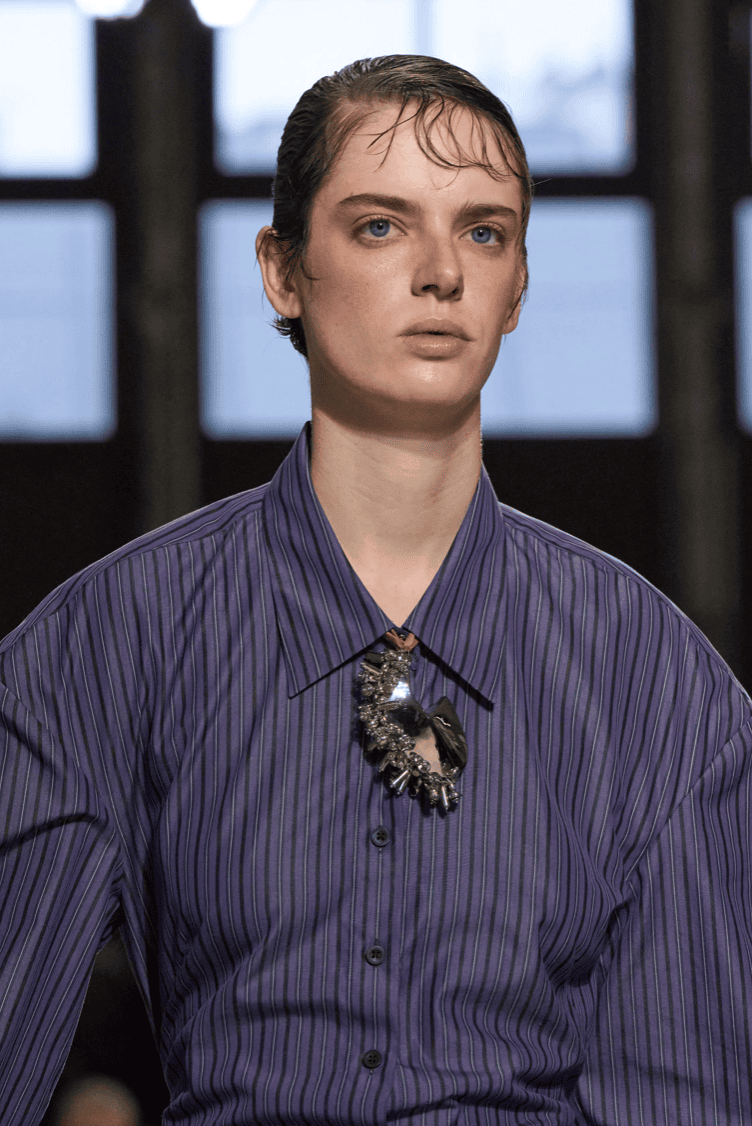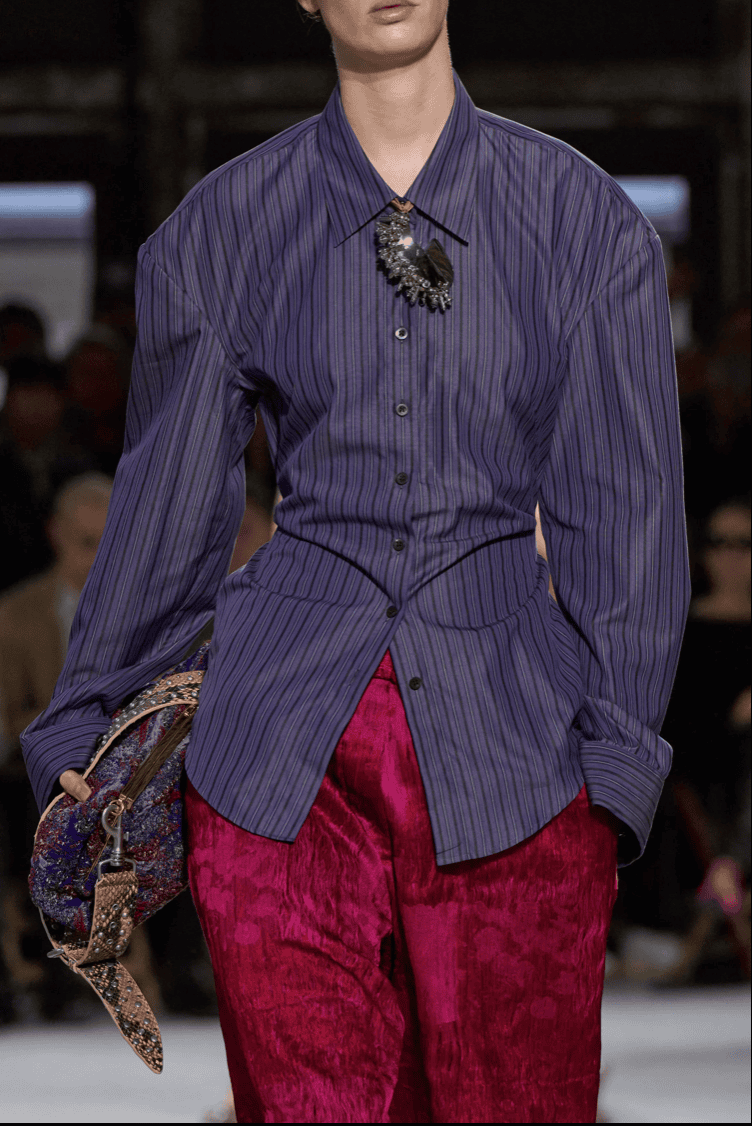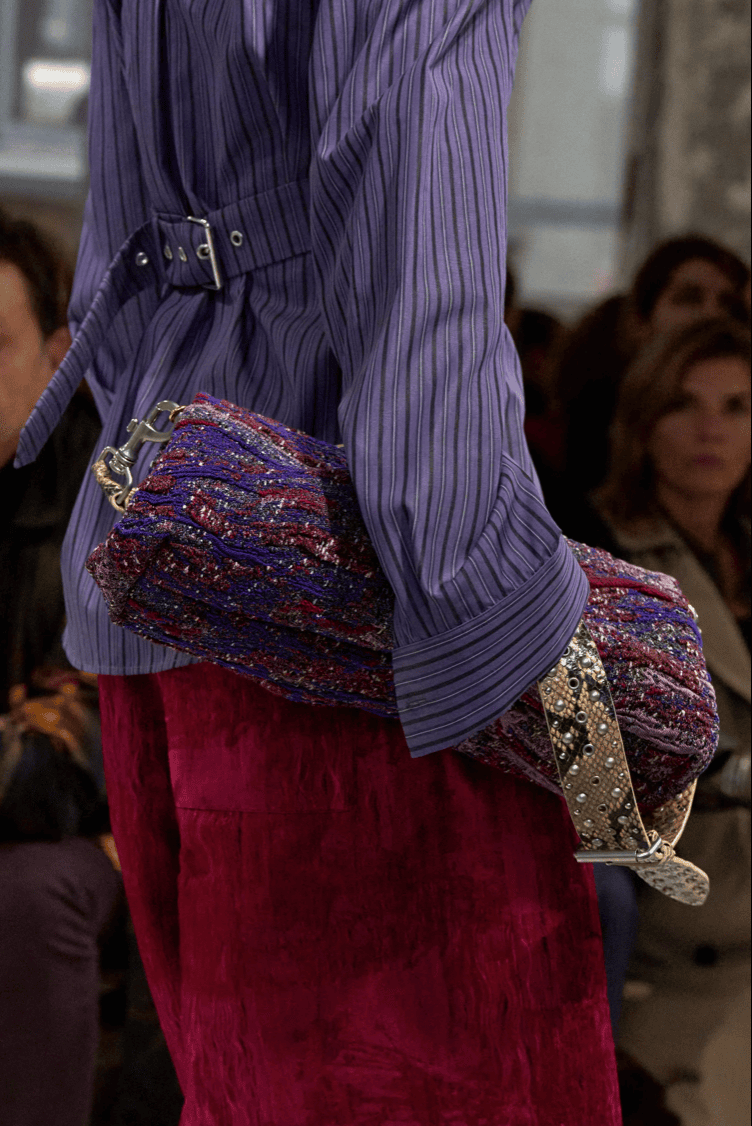Imagine a snake in ecdysis, the process of changing its skin—an unmistakable symbol of growth. The new skin appears, bearing the same patterns and colours, but with a renewed vibrancy. Whether by mistake or design, this was precisely the narrative on the Dries Van Noten runway yesterday, where a design team unveiled their first collection without the founder’s direct hand at the helm. A new skin for the same foundation. The snake reference was, in fact, literal. A first model was sent down the runway draped in a snakeskin-like trench coat, entirely made from shimmering sequins. Her hair was an orchestrated mess, artfully tousled, while her face was dewy and radiant, fresh like someone who had just awakened from a restorative night of sleep.
In true Dries fashion, fabric manipulation reaches for ambitious volume and shapes. Blouses cinched at the waist with ruching strings gave the illusion of pin-tucked fabric and created a peplum-like effect. Pencil skirts, meanwhile, folded outward in bell-like shapes at the waistline, resulting in a sculptural drape. The collection was anything but a blink-and-you’ll-miss-it affair. Statement shoulders came in a multitude: sharp and commanding, slouched and effortless, or, in the case of a sleeveless brocade vest-dress hybrid, absent altogether. Amidst this play of silhouettes was also a palpable tension. A burgundy pinstripe blazer paired with a high-waisted skirt offered a dose of sober restraint, while a parade of bias-cut silk camisoles—flowing with an ease that bordered on nonchalance—brought a contrasting sense of liberation.
It wasn’t just the relentless downpour that’s hung over Paris all week—cold yet oppressively humid inside an industrial space packed with 400 bodies—but the show itself seemed to evoke a distinctly tropical air. Silk garments had a liquid-like shimmer to them, and were rendered in rich prints that merged animaliers with floral designs, most distinctively those of fuchsia cymbidium orchids. In many ways, if Dries Van Noten’s June collection gazed forward, the Spring offering from his design studio felt like a reverent nod to the past, infused with an unmistakable sense of the house’s future. The experimentation, bold and unapologetic, was unmistakable. The team did not shy away from amplifying the house’s iconic codes; instead, they leaned into them with a kind of childlike curiosity and creativity, all while maintaining the signature Van Noten touch. His absence was palpable, yet his presence was everywhere.
